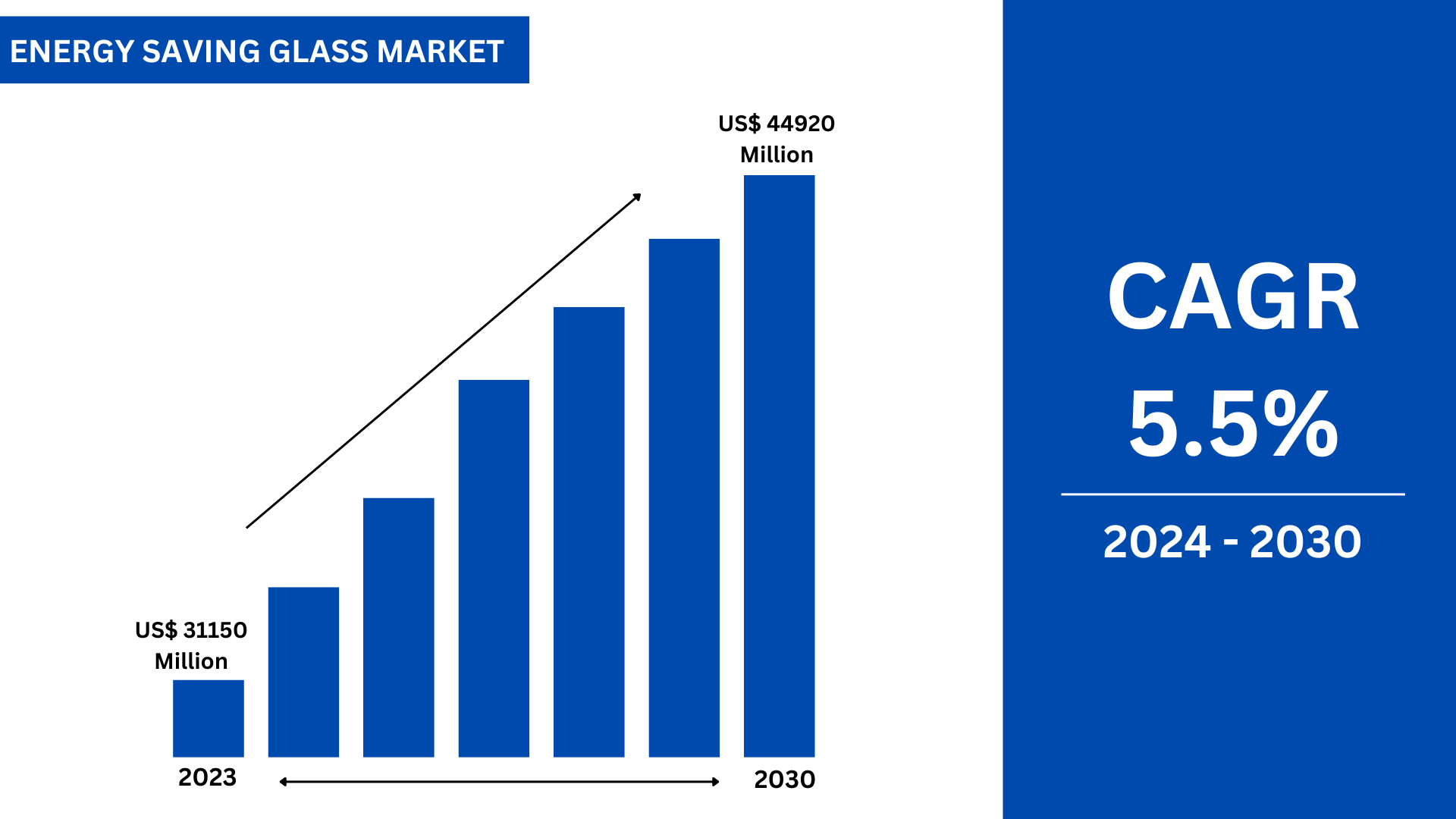TOP CATEGORY: Chemicals & Materials | Life Sciences | Banking & Finance | ICT Media

Download Report PDF Instantly
Report overview
The global "Energy Saving Glass Market" was valued at US$ 31150 million in 2023 and is projected to reach US$ 44920 million by 2030, at a CAGR of 5.5% during the forecast period.

This research report provides a comprehensive analysis of the Energy Saving Glass market, focusing on the current trends, market dynamics, and future prospects. The report explores the global Energy Saving Glass market, including major regions such as North America, Europe, Asia-Pacific, and emerging markets. It also examines key factors driving the growth of Energy Saving Glass, challenges faced by the industry, and potential opportunities for market players.
The global Energy Saving Glass market has witnessed rapid growth in recent years, driven by increasing environmental concerns, government incentives, and advancements in technology. The Energy Saving Glass market presents opportunities for various stakeholders, including Residential Buildings, Commercial Buildings. Collaboration between the private sector and governments can accelerate the development of supportive policies, research and development efforts, and investment in Energy Saving Glass market. Additionally, the growing consumer demand present avenues for market expansion.
With the increasing awareness of global environmental protection, high-performance energy-saving coated glass has broad room for development. The demand for energy-saving glass is highest especially in the construction, automotive, and solar panel industries, which is expected to drive the global energy-saving coated glass market. In addition, growing concerns about global carbon emission levels and sustainability have driven significant investment by governments around the world. Favorable business plans and policies, growing world population, and people in need of latest equipment will create more opportunities in the global energy-saving coated glass market. With the continuous advancement of technology, the performance and quality of energy-saving glass are also constantly improving. For example, the use of advanced production processes can improve the thermal insulation performance and durability of energy-saving glass; the application of new materials and new technologies can improve the fire resistance and environmental protection of energy-saving glass. These technological innovations will provide stronger impetus for the development of energy-saving glass.
Key Features:
The research report on the Energy Saving Glass market includes several key features to provide comprehensive insights and facilitate decision-making for stakeholders.
Market Segmentation
Energy Saving Glass market is split by Type and by Application. For the period 2019-2030, the growth among segments provides accurate calculations and forecasts for consumption value by Type, and by Application in terms of volume and value.
Market segment by Type
Chapter 1: Introduces the definition of Energy Saving Glass, market overview.
Chapter 2: Global Energy Saving Glass market size in revenue and volume.
Chapter 3: Detailed analysis of Energy Saving Glass manufacturers competitive landscape, price, sales and revenue market share, latest development plan, merger, and acquisition information, etc.
Chapter 4: Provides the analysis of various market segments by type, covering the market size and development potential of each market segment, to help readers find the blue ocean market in different market segments.
Chapter 5: Provides the analysis of various market segments by application, covering the market size and development potential of each market segment, to help readers find the blue ocean market in different downstream markets.
Chapter 6: Sales of Energy Saving Glass in regional level and country level. It provides a quantitative analysis of the market size and development potential of each region and its main countries and introduces the market development, future development prospects, market space of each country in the world.
Chapter 7: Provides profiles of key players, introducing the basic situation of the main companies in the market in detail, including product sales, revenue, price, gross margin, product introduction, recent development, etc.
Chapter 8: Global Energy Saving Glass capacity by region & country.
Chapter 9: Introduces the market dynamics, latest developments of the market, the driving factors and restrictive factors of the market, the challenges and risks faced by manufacturers in the industry, and the analysis of relevant policies in the industry.
Chapter 10: Analysis of industrial chain, including the upstream and downstream of the industry.
Chapter 11: The main points and conclusions of the report.